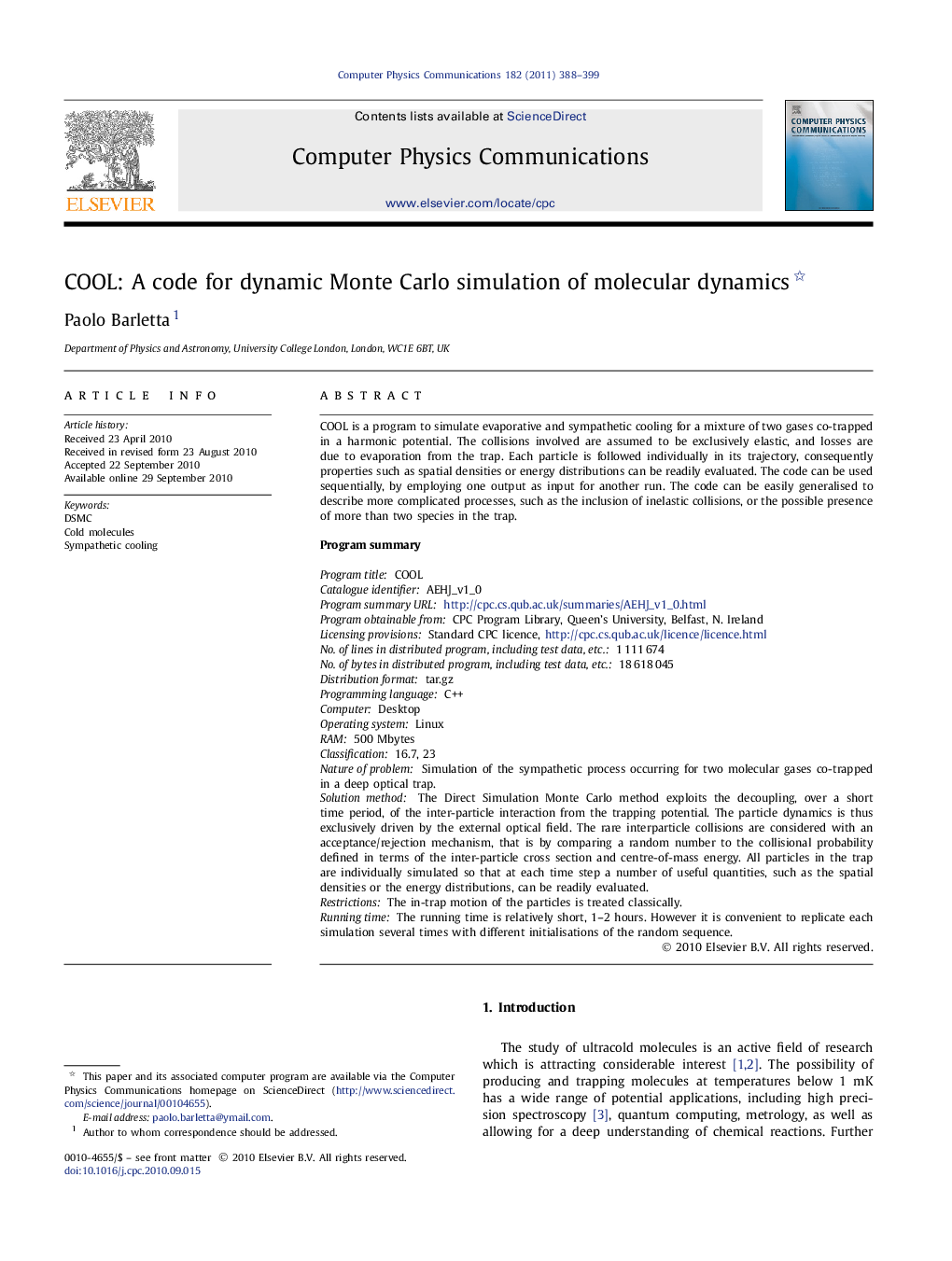| کد مقاله | کد نشریه | سال انتشار | مقاله انگلیسی | نسخه تمام متن |
|---|---|---|---|---|
| 501850 | 863661 | 2011 | 12 صفحه PDF | دانلود رایگان |

COOL is a program to simulate evaporative and sympathetic cooling for a mixture of two gases co-trapped in a harmonic potential. The collisions involved are assumed to be exclusively elastic, and losses are due to evaporation from the trap. Each particle is followed individually in its trajectory, consequently properties such as spatial densities or energy distributions can be readily evaluated. The code can be used sequentially, by employing one output as input for another run. The code can be easily generalised to describe more complicated processes, such as the inclusion of inelastic collisions, or the possible presence of more than two species in the trap.Program summaryProgram title: COOLCatalogue identifier: AEHJ_v1_0Program summary URL:http://cpc.cs.qub.ac.uk/summaries/AEHJ_v1_0.htmlProgram obtainable from: CPC Program Library, Queen's University, Belfast, N. IrelandLicensing provisions: Standard CPC licence, http://cpc.cs.qub.ac.uk/licence/licence.htmlNo. of lines in distributed program, including test data, etc.: 1 111 674No. of bytes in distributed program, including test data, etc.: 18 618 045Distribution format: tar.gzProgramming language: C++Computer: DesktopOperating system: LinuxRAM: 500 MbytesClassification: 16.7, 23Nature of problem: Simulation of the sympathetic process occurring for two molecular gases co-trapped in a deep optical trap.Solution method: The Direct Simulation Monte Carlo method exploits the decoupling, over a short time period, of the inter-particle interaction from the trapping potential. The particle dynamics is thus exclusively driven by the external optical field. The rare interparticle collisions are considered with an acceptance/rejection mechanism, that is by comparing a random number to the collisional probability defined in terms of the inter-particle cross section and centre-of-mass energy. All particles in the trap are individually simulated so that at each time step a number of useful quantities, such as the spatial densities or the energy distributions, can be readily evaluated.Restrictions: The in-trap motion of the particles is treated classically.Running time: The running time is relatively short, 1–2 hours. However it is convenient to replicate each simulation several times with different initialisations of the random sequence.
Journal: Computer Physics Communications - Volume 182, Issue 2, February 2011, Pages 388–399